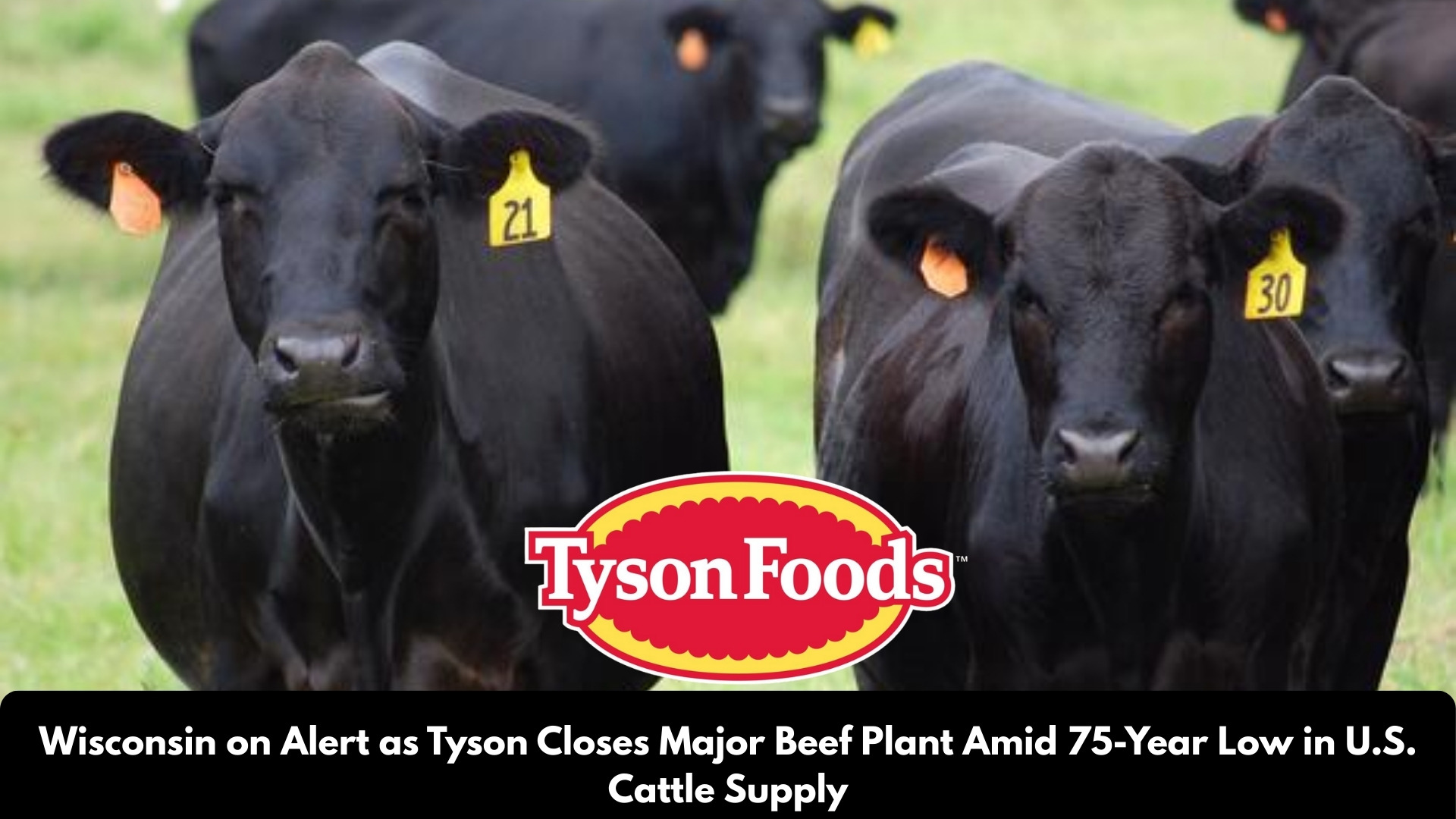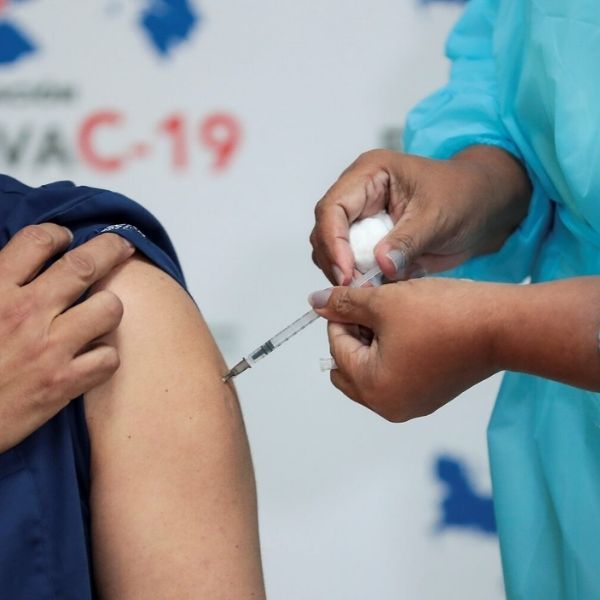Tyson Foods’ decision to shut down one of the largest U.S. beef plants is a wake‑up call for Wisconsin, exposing how a 75‑year low in the national cattle herd could reshape beef prices, packing capacity, farm incomes, and rural jobs across the Badger State.
Tyson’s big beef plant shutdown: what happened?
Tyson Foods is closing its massive beef‑processing facility in Lexington, Nebraska, one of the largest beef plants in the country, with capacity to process nearly 5,000 head of cattle per day and employing about 3,000 workers. The plant is scheduled to close around January 2026 as part of a restructuring plan that also shifts Tyson’s Amarillo, Texas, facility to a single full‑capacity shift. Company executives have linked the move directly to shrinking cattle supplies, higher cattle prices, and hundreds of millions of dollars in losses in its beef division.
Tyson has warned investors that its beef business could face losses of up to about 600 million dollars in the current fiscal year, driven by tighter cattle supplies and reduced margins. At the same time, the company plans to increase production at other plants, but total U.S. slaughter capacity will still fall as a high‑throughput plant like Lexington disappears from the grid.
U.S. cattle herd at a 75‑year low
The deeper story behind Tyson’s closure is the structural decline in the U.S. cattle herd after years of drought and high input costs. USDA data show that all cattle and calves in the U.S. on January 1, 2024, totaled about 87.2 million head, down 2 percent from 2023 and the lowest January inventory since 1951. Within that, the U.S. beef cow herd stood at roughly 28.2 million head, also the smallest since 1951 after consecutive annual declines.
Economists point out that the 2023 calf crop, at about 33.6 million head, was the smallest since 1948, while replacement beef heifers also declined, signaling limited ability to rebuild numbers quickly. One analysis notes that the country’s beef herd in 2024 was at its lowest level in roughly three‑quarters of a century, while U.S. population and beef demand have continued to grow, forcing record levels of imports to help fill the gap. In 2024, imported beef accounted for roughly 15 percent of beef sold in the U.S., around 2 million tonnes, a record volume that underscores the domestic supply crunch.
Why low cattle numbers hurt packers
Packing plants like Tyson’s Nebraska facility depend on steady, high‑volume cattle flows to spread fixed costs and run efficiently. When cow and calf inventories shrink, packers are forced to compete harder for fewer animals, driving up live cattle prices and compressing processing margins, especially in older or higher‑cost plants. According to USDA and industry analysts, the combination of drought‑driven herd liquidation, high feed costs, and aggressive marketing of heifers led to unusually high cow and heifer slaughter in 2022 and 2023, pulling future supplies forward and deepening the current shortfall.
Tyson has already responded by cutting capacity—first in its poultry division and now in beef—claiming it must “right‑size” its operations to match reduced cattle availability. The Lexington closure removes a plant that alone processed thousands of head per day, and even if other facilities increase shifts, they are unlikely to replace all of that throughput in the short term. For cattle‑producing states, fewer packers can mean less local competition for cattle, more hauling distance, and potentially wider spreads between what packers pay and what consumers pay at retail.
Wisconsin’s beef footprint: bigger than many realize
Wisconsin is best known nationally as “America’s Dairyland,” but cattle and calves are one of its top agricultural commodities and a quiet backbone of many mixed crop‑livestock farms. In 2022, Wisconsin agriculture generated about 17.3 billion dollars in cash receipts, with dairy products (especially milk), corn, and cattle and calves among the highest‑valued commodities. Overall, agriculture and food processing contribute roughly 116.3 billion dollars annually to the state’s economy when multiplier effects are included.
A detailed study of the Wisconsin beef industry estimated that beef production and related activities support about 35,100 jobs, 2.1 billion dollars in income, nearly 6.94 billion dollars in revenue, and more than 200 million dollars in government revenue. Every 100 dollars of income in the beef sector was found to generate about 117 dollars of additional economic activity in the broader Wisconsin economy, highlighting how cattle dollars circulate through local businesses, equipment dealers, veterinarians, and rural services. When disruptions occur in the national beef chain, those effects ultimately ripple into Wisconsin’s farm balance sheets, processing plants, trucking companies, and rural main streets.
How a Nebraska plant closure reaches Wisconsin
On the surface, a Tyson beef plant shutting down in Nebraska might seem distant from Wisconsin’s barns and feedlots, but the beef supply chain is tightly interconnected. Large packers often source cattle from multiple states, and their pricing, procurement strategies, and capacity decisions affect regional and national cash cattle markets. As Lexington closes and another Tyson facility shifts to a single shift, the geographic pattern of demand for cattle, especially fed cattle, will change, influencing basis levels and transport flows across the Midwest and Great Plains.
For Wisconsin cattle producers who ship animals to out‑of‑state packers or who depend on competitive bids influenced by national plants, reduced overall capacity can mean narrower marketing options and more pricing power concentrated in fewer buyers. Communities in Nebraska are already bracing for the loss of about 3,000 plant jobs in a town where Tyson is the largest employer, a scenario that echoes the experience of other rural areas when meatpacking plants close or scale back. While Wisconsin is not losing a major beef plant today, the same structural pressures—tight cattle supply, volatile margins, and consolidation—could eventually put strain on regional processors closer to home.
Price shock ahead for Wisconsin consumers
When cattle numbers hit multi‑decade lows, the long‑term result is almost always higher beef prices at the grocery store. Analysts reading USDA’s cattle inventory reports warn that the smallest calf crop since the late 1940s and declining replacement heifers mean fewer animals will be available to refill feedlots once current on‑feed supplies are worked through, tightening supplies in 2024 and 2025. With domestic production expected to be several percent below recent peaks, retailers and restaurants are likely to face elevated wholesale costs and pass a significant share on to consumers.
One estimate suggests that as the cattle cycle bottoms out, beef prices could reach record levels in 2024–2025, especially for popular cuts like steaks and roasts. For Wisconsin families, where food prices are already a political and economic concern, sustained high beef prices could shift consumption patterns toward pork, poultry, or plant‑based proteins, at least temporarily. Given that imported beef already represents about 15 percent of U.S. beef sales, further tightening of domestic supplies could increase reliance on foreign sources, raising fresh debates about food security, traceability, and trade policy.
Farm‑level risks for Wisconsin cattle producers
For Wisconsin cattle and calf producers, a short national herd is a double‑edged sword. On one side, fewer animals nationally often support higher prices for feeder and finished cattle, giving well‑positioned producers a chance at improved returns if they can manage costs. On the other side, drought, feed costs, interest rates, and labor shortages make it difficult to expand or even maintain herds, particularly after several years in which many producers were forced to market breeding stock to pay bills.
Wisconsin’s mixed dairy‑beef structure adds complexity: cull dairy cows and dairy‑beef crossbreds are important components of the state’s cattle flows into the national beef system. If national packers reduce shackle space or prioritize certain classes of cattle because of tighter capacity, some Wisconsin operations might see reduced flexibility in how and when they market animals. Smaller and mid‑sized independent processors in the state could benefit from local demand but may struggle to absorb sudden shifts if large plants elsewhere exit the market.
A warning signal for Wisconsin policymakers
The Tyson shutdown is a stark signal that the current cattle cycle, climate volatility, and industry consolidation are converging into a structural test for the U.S. beef system. For Wisconsin policymakers, this raises hard questions about how to support resilient local processing capacity, help farms adapt to drought risk, and maintain competitive markets where no single packer holds overwhelming leverage. Economic impact studies already show how critical livestock and food processing are to Wisconsin’s GDP, jobs, and tax revenues, suggesting that shocks in national protein markets can quickly become state‑level issues.
Tools such as state‑backed loans or grants for small and regional meat plants, investments in cold‑chain infrastructure, and programs that encourage rotational grazing and water management could all help insulate Wisconsin from future supply swings. At the same time, regulators and lawmakers may look more closely at competition in the meatpacking sector, echoing recent national scrutiny of whether concentration among a handful of packers contributes to price spreads between farm and retail levels.
What Wisconsin producers and consumers can do now
For producers, the current environment demands sharper risk management and market awareness. Monitoring USDA cattle inventory data, regional basis trends, and packer capacity changes can help farmers time marketing and evaluate whether to retain heifers, alter breeding schedules, or diversify into other enterprises. Working with local and regional processors where possible can reduce dependence on distant packers whose capacity decisions, as seen in Lexington, can change abruptly.
For consumers, understanding that record‑low cattle numbers and plant closures are structural, not temporary, can inform household budgeting and diet choices in the coming years. Shifting some consumption to value cuts, buying in bulk directly from local farms, or mixing beef with other proteins are likely strategies to manage rising retail prices without abandoning beef entirely. In the longer run, consumer pressure for transparency and resilience in the supply chain can support policy and market innovations that benefit both Wisconsin producers and families at the checkout line.
Ultimately, Tyson’s decision to shut down a massive beef plant because cattle supplies have fallen to lows not seen in roughly three generations should be read as a warning flare for Wisconsin. Without proactive steps by producers, processors, consumers, and policymakers, the combination of tight cattle numbers, high prices, and concentrated packing capacity could erode the stability of one of the state’s most important—if often overlooked—livestock sectors.














Leave a Reply